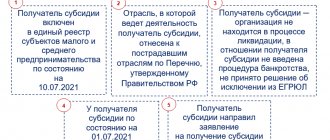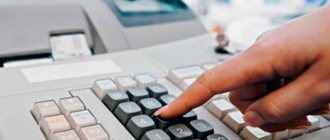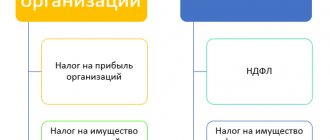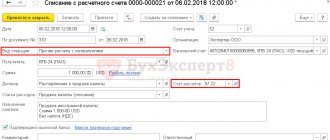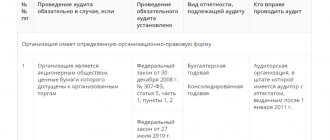First, about the pleasant things
Spoiler: there is less paperwork.
Cash limit
Organizations and individual entrepreneurs - small businesses may not set a cash limit (clause 2 of the Directive of the Central Bank of the Russian Federation dated March 11, 2014 No. 3210-U). That is, at the end of the working day you can leave any desired amount in the cash register.
From 07.11.2020, tax authorities update the SME register monthly. So information about new small businesses gets into it quickly.
However, with the end of 2022, the moratorium on cash discipline checks has also expired. Therefore, it is important to keep the documents in perfect order. If your company decides not to set a cash limit, record this fact with an order.
Procedure for processing cash transactions
Receipts of money into the cash register are recorded with incoming cash orders (form KO-1), and disposals are recorded with outgoing cash orders (form KO-2).
The cashier can draw up the documents, but the chief accountant or manager must sign them. All cash inflows and outflows are entered into the cash book (form KO-4). Documents can be maintained both on paper and electronically.
Individual entrepreneurs have the right not to prepare the cash documents listed above if they keep tax records. That is, they take into account income, expenses, physical indicators - data that is needed for the correct calculation of taxes.
Organizations and individual entrepreneurs can now conduct cash transactions through automatic devices without the participation of a cashier. The main thing is that the device can recognize at least four security features on a banknote. We will not provide a complete list of signs; it can be found in paragraph 1.1. Regulations of the Central Bank of the Russian Federation dated January 29, 2018 No. 630-P.
When loading money into the device, an expense order is filled out. And the withdrawal of money is formalized by the parishioner.
Recipient Identification
When issuing money, the cashier must make sure that he is issuing money to the person indicated in the debit order or statement. But now it is not necessary to check your passport. The cashier can decide what confirmation to require. For example: identify the recipient using a driver's license.
Salary deposit
The mark on the deposit of wages in the statement is no longer needed. If the company has a cash limit, then after five days the unpaid salary must be handed over to the bank. If there is no limit, you can leave the money in the cash register.
Procedure for depositing money into the bank
At the end of the working day, the cashier-operator hands over the proceeds to the senior cashier (or directly to the bank through collection) against receipt, and the money must be collected by banknotes. Also, the acts and necessary documents for calculating revenue are transferred to the senior cashier, who draws up a summary report, transmitted along with cash orders to the accounting department.
The funds received at the cash desk in the form of trading proceeds must be credited to the company’s account. To do this, they can be handed over to the daytime and evening cash desks of banks, to collectors and to joint cash desks at enterprises for subsequent delivery to the bank, as well as to communication companies for transfer to bank accounts on the basis of concluded agreements.
The most common form of delivery of trade proceeds of a trading enterprise is a contractual form with the participation of a representative of the bank - the collector. The proceeds are transferred to the collector at the time set by the bank (usually his arrival is timed to coincide with the closing time of the enterprise in order to avoid large cash balances in the cash register). Before this, the cashier prepares the proceeds for delivery, selecting funds by banknotes, putting them in unassembled bundles of 100 pieces. one dignity and bandaging.
The preparation of funds for delivery to the bank is accompanied by the issuance of a transmittal sheet (invoice) in 3 copies. This document must contain the following information:
store number;
current account number;
Name of the bank;
bag number;
the amount of money invested in the bag.
Transmittal statements - 1st and 2nd copies - contain an inventory of funds deposited at the bank.
The banknote inventory contains a list of banknotes of each denomination: 10, 50, 100, 500, 1000, 5,000 rubles, as well as the amount for each item.
The money, selected in this order, and the first copy of the transmittal sheet are placed in the bag; the bag is closed and sealed.
Bank collectors serving retail outlets collect bags of enterprises with cash. Trade workers must clearly understand the requirements that they must present for handing over a money bag to a collector.
A collector arriving at a commercial enterprise must present an identification card with a photo and a sample signature, a bank power of attorney for the right to collect funds from enterprises, organizations, an appearance card, a second bag intended for exchange for a bag with proceeds, with the same number.
Only after checking all these documents, the collector is given a bag with money and a 2nd copy of the transmittal sheet.
The collector, upon receiving the bag, makes a note - puts a date and stamp on the 3rd copy of the transmittal sheet, which remains after that in the trading enterprise.
At the bank office, the bag is opened, the money is counted, and checked against the transmittal sheet. If, as a result of the inspection, discrepancies are found - shortages, surpluses - a corresponding act is drawn up, a mark is made on 1-2 copies. If counterfeit banknotes are found among the funds deposited with the bank, they are seized and a corresponding report is drawn up. All acts are drawn up by the bank unilaterally and are not subject to appeal. After verification, the money is credited to the account of the trading enterprise, which is confirmed by the return of the 2nd copy of the statement to the accounting department of the enterprise.
In a market economy, when small retail trade has become widespread, enterprises increasingly hand over funds received from the sale of goods to bank institutions on their own. Such an operation is formalized in the usual manner with the preparation of a cash receipt order confirming the withdrawal of proceeds from the cash register. At the same time, when depositing money into the bank, a representative of a trading enterprise fills out an application for a cash deposit.
At the end of the working day, the cashier-operator hands over the proceeds to the senior cashier (or directly to the bank through collection) against receipt, and the money must be collected by banknotes. Also, the acts and necessary documents for calculating revenue are transferred to the senior cashier, who draws up a summary report, transmitted along with cash orders to the accounting department.
The funds received at the cash desk in the form of trading proceeds must be credited to the company’s account. To do this, they can be handed over to the daytime and evening cash desks of banks, to collectors and to joint cash desks at enterprises for subsequent delivery to the bank, as well as to communication companies for transfer to bank accounts on the basis of concluded agreements.
The most common form of delivery of trade proceeds of a trading enterprise is a contractual form with the participation of a representative of the bank - the collector. The proceeds are transferred to the collector at the time set by the bank (usually his arrival is timed to coincide with the closing time of the enterprise in order to avoid large cash balances in the cash register). Before this, the cashier prepares the proceeds for delivery, selecting funds by banknotes, putting them in unassembled bundles of 100 pieces. one dignity and bandaging.
The preparation of funds for delivery to the bank is accompanied by the issuance of a transmittal sheet (invoice) in 3 copies. This document must contain the following information:
store number;
current account number;
Name of the bank;
bag number;
the amount of money invested in the bag.
Transmittal statements - 1st and 2nd copies - contain an inventory of funds deposited at the bank.
The banknote inventory contains a list of banknotes of each denomination: 10, 50, 100, 500, 1000, 5,000 rubles, as well as the amount for each item.
The money, selected in this order, and the first copy of the transmittal sheet are placed in the bag; the bag is closed and sealed.
Bank collectors serving retail outlets collect bags of enterprises with cash. Trade workers must clearly understand the requirements that they must present for handing over a money bag to a collector.
A collector arriving at a commercial enterprise must present an identification card with a photo and a sample signature, a bank power of attorney for the right to collect funds from enterprises, organizations, an appearance card, a second bag intended for exchange for a bag with proceeds, with the same number.
Only after checking all these documents, the collector is given a bag with money and a 2nd copy of the transmittal sheet.
The collector, upon receiving the bag, makes a note - puts a date and stamp on the 3rd copy of the transmittal sheet, which remains after that in the trading enterprise.
At the bank office, the bag is opened, the money is counted, and checked against the transmittal sheet. If, as a result of the inspection, discrepancies are found - shortages, surpluses - a corresponding act is drawn up, a mark is made on 1-2 copies. If counterfeit banknotes are found among the funds deposited with the bank, they are seized and a corresponding report is drawn up. All acts are drawn up by the bank unilaterally and are not subject to appeal. After verification, the money is credited to the account of the trading enterprise, which is confirmed by the return of the 2nd copy of the statement to the accounting department of the enterprise.
In a market economy, when small retail trade has become widespread, enterprises increasingly hand over funds received from the sale of goods to bank institutions on their own. Such an operation is formalized in the usual manner with the preparation of a cash receipt order confirming the withdrawal of proceeds from the cash register. At the same time, when depositing money into the bank, a representative of a trading enterprise fills out an application for a cash deposit.
Issuance of money on account
In the application from the employee it is no longer necessary to indicate the amount of the advance and the period for which it must be issued. The manager's signature on the application is also not required. An order to issue funds can be issued to several people at once. The order lists the names of employees, amounts and deadlines for issuing money on account.
The three-day deadline for reporting imprest amounts has been cancelled.
Now organizations and individual entrepreneurs can decide independently after what period of time an employee must submit an advance report. You can give money to an employee again even when he has not yet accounted for past amounts.
Fund registration procedure
The issuance of change to the cashier is regulated by the Standard Rules for the use of cash registers established by the Ministry of Finance No. 104 of August 30, 1993. In particular, this is discussed in paragraphs 3.8 and 3.8.1. These paragraphs stipulate that the cashier, at the beginning of the working day, must receive everything necessary to carry out his activities. The list of necessary items also includes change notes. Money is issued against signature. The basis for issuing is a cash receipt order. There is no need to complete any further documents. The prepared receipts and acts of acceptance in these circumstances will not have legal force. The second step is entering information into the cash book.
The formation of the fund is carried out on the basis of these two securities. They confirm that the cash desk contains money for exchange, and not surplus. At the end of the day, the remainder is surrendered.
To facilitate the verification process, it is recommended to issue a local order for the extradition of the Russian Federation. It indicates the exact amount of cash for exchange purposes, the conditions for issuing money, and the change for each cash register. It is recommended to keep a copy of the Order and the warrant at the location where the cash register is installed. Documents should always be at hand. This is necessary so that they can be quickly retrieved during inspection.
IMPORTANT! Various orders are drawn up for taxable proceeds and change money.
ATTENTION! If the company employs several cashiers, you need to draw up another paper. In particular, this is a book of accounting for the money provided. It is compiled according to form No. KO-5.
Now about the unpleasant
Spoiler: the state wants businesses to operate cashless.
Spending money from the cash register
Not all the money that comes into the cash register can be taken and immediately spent on some purpose. In fact, only revenue can be spent directly.
Although the rules for cash payments (clause 1 of the Instructions of the Central Bank of the Russian Federation dated December 9, 2019 No. 5348-U) contain several more options, in practice such situations are rare. For example: you can directly spend the cash received under a loan agreement from a microfinance organization or a pawnshop.
It turns out that if the accountant has deposited the remaining funds at the cash desk, then it is no longer possible to give them, for example, for a salary or for reporting to another employee. First, you need to deposit the money into your current account, and then withdraw the required amount again.
Proceeds from the cash register can be used for the following purposes:
- salary, benefits;
- payment for goods, works, services:
- issuance on record;
- return of cash advances to the client if the transaction was terminated;
- issuance of funds for the personal needs of the entrepreneur.
Proceeds cannot be spent on:
- purchase of securities;
- refunds for goods previously paid for by bank transfer;
- payment of dividends;
- issuing loans;
- payments under the lease agreement.
Restriction on cash payments
The maximum amount of cash payments between organizations and individual entrepreneurs within the framework of one agreement remains the same: 100 thousand rubles.
And in general, from January 10, 2021, business will be more strictly controlled. All operations to withdraw or deposit cash in excess of 600 thousand rubles will be credited to the account. And the fact that the operation is related to the economic activities of the enterprise will not be taken into account. The bank is obliged to transfer this information to Rosfinmonitoring, which, in turn, can notify the Federal Tax Service.
Money quality control
The cashier is now required to check the solvency of money.
Damaged but valid banknotes and coins must be accepted at the cash desk. Money is checked according to the criteria from clause 1 of Bank of Russia Directive No. 1778-U dated December 26, 2006. In particular: banknotes may be worn, frayed, torn, and coins may have minor mechanical damage.
But it is impossible to issue money from the cash register that has at least one damage from the list in clause 2.9 of the Central Bank Regulation No. 630-P dated January 29, 2018. We are talking in particular about banknotes with extraneous inscriptions, stamps, and through holes.
Damaged money must be returned to the bank.

